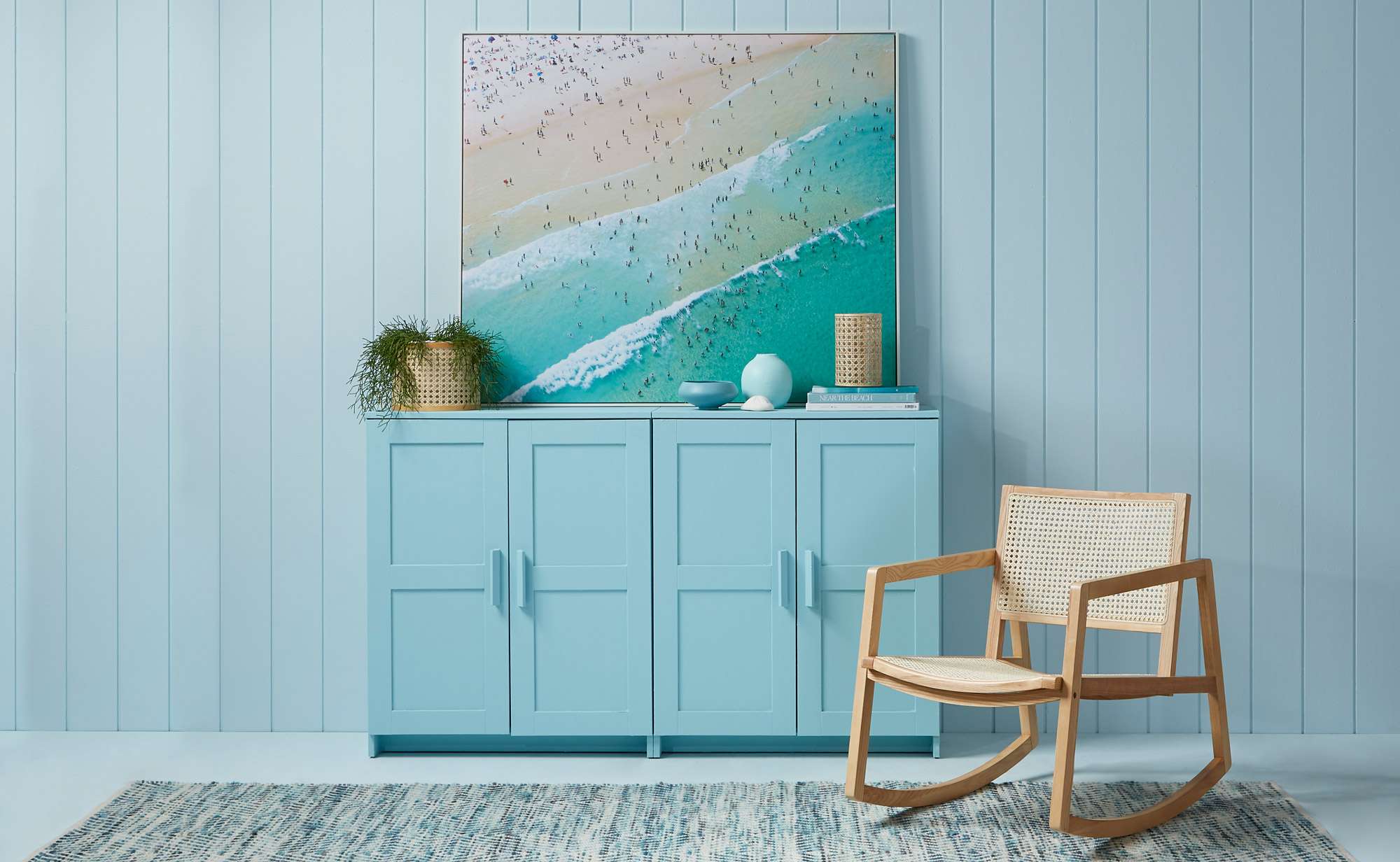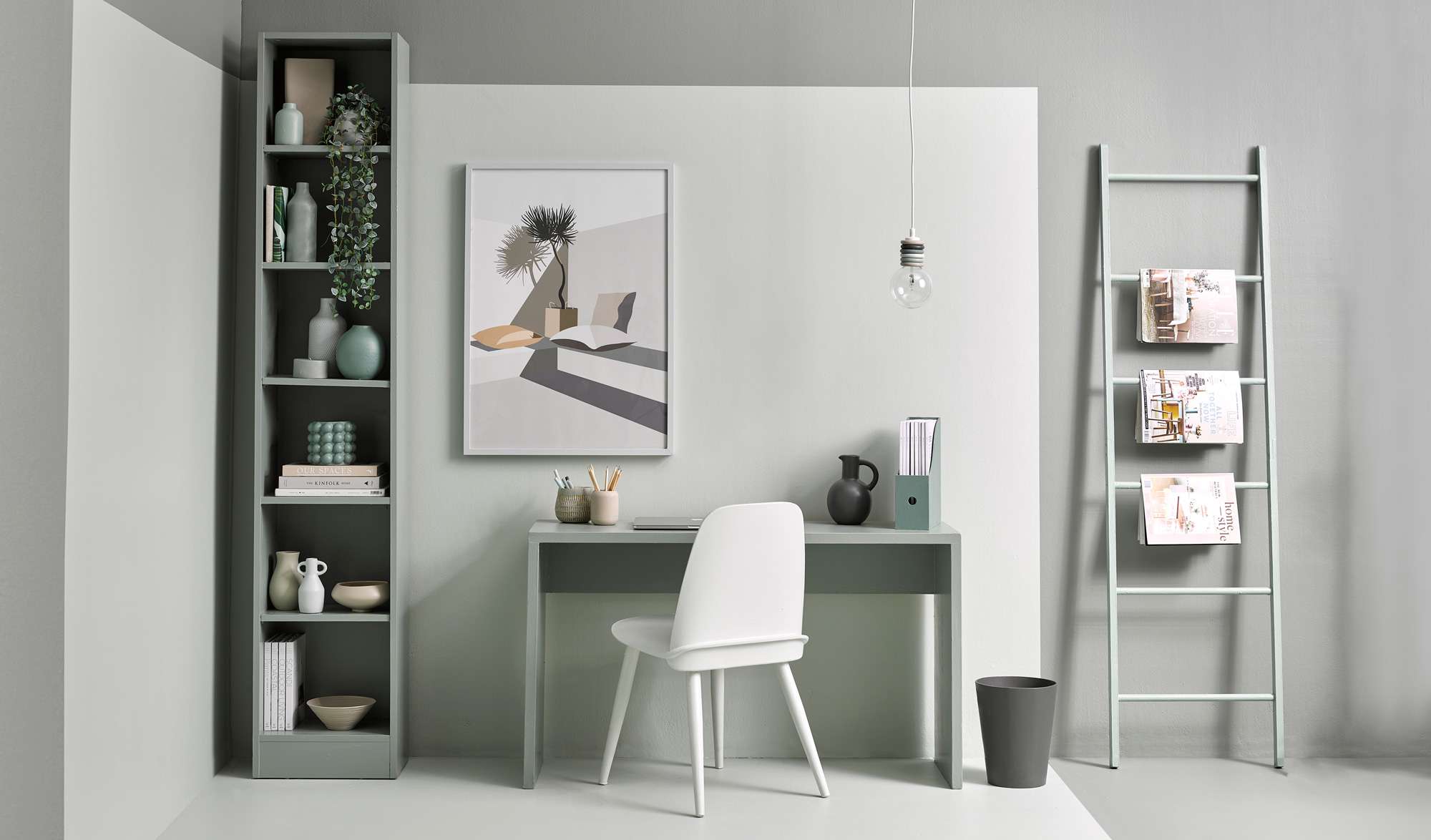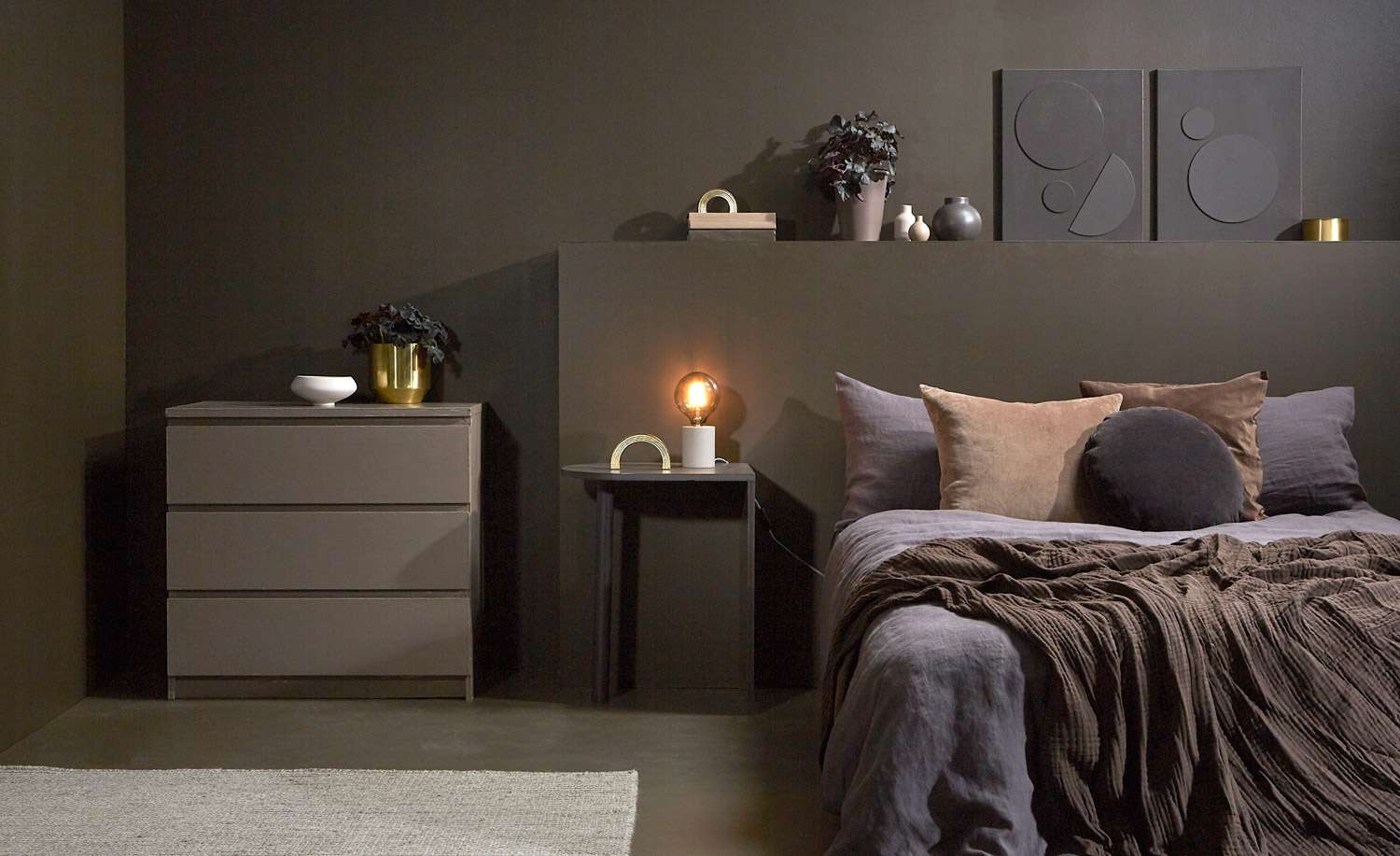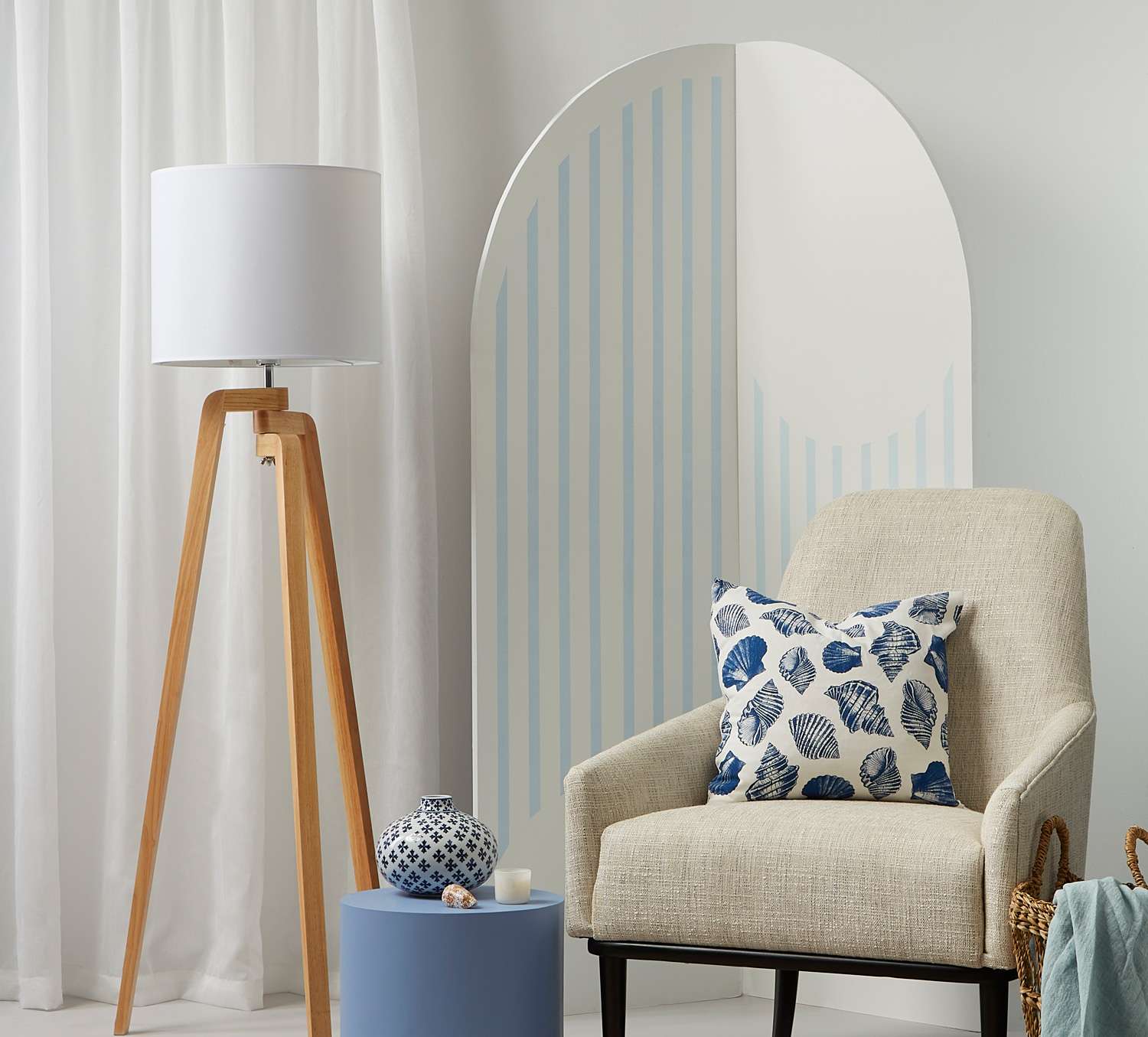For many, a monochrome interior means white on white with some black accents. But today’s monochrome goes well beyond that to embrace the true meaning of the word monochrome - one colour.
That can mean any colour. Neutral colours do lend themselves to a monochrome background in a room, particularly where space and light are important. But your monochrome space could just as easily be a dramatic collection of charcoal shades or blues in cobalt, royal, navy and sky.
Some people might be put off by the idea of monochromatic interiors, worrying that the couch will blend into the walls, and the end result will be flat and dull.
The key is layering and texture. Once you’ve chosen your colour, work with tints, shades, textiles, and lighting to bring your room to life. Done well, a boldly coloured monochrome space should be dramatic, inviting and relaxing to be in.
Start your property search
Why go monochromatic at all?
Simplifying your room down to one colour can create a very relaxing, soothing and uncluttered space to spend time in.
By confining your colour choices, it will often draw attention to interesting features in a room, a dramatic light fitting, a decorative ceiling, an amazing view, a contrasting artwork or a bold piece of furniture.
Going for a monochrome colour palette is also an opportunity to play around with multiple clashing patterns and textures that might overwhelm your space when combined with a more varied colour scheme. In a monochrome room, those patterns and textures are important in adding layers of visual interest so the space doesn’t appear too flat or uninteresting.
Choose your colour
If you’re opting to focus on one colour for your one colour, then choosing that colour is an important decision! You might already be committed to a room that’s green, or grey, or pink. But which green, grey or pink?
Spend some time with Resene testpots to see how colours change in different light and in different parts of the room, and to see how different intensities of one colour will work together to give your room the simplicity, drama or depth you’re looking for.
Resene colour charts can be a great help when looking for different tints and shades to pair with your main colour choice. They’re laid out so you can see colour graduations. Once you have decided on favourites use Resene testpots to decide the exact combination for your room.

This fresh, beachy monochrome room makes great use of texture in the furniture and finishes for added interest. The floor and tongue-and-groove wall are Resene Cut Glass and the cabinets are Resene Kumutoto. The bowl and case on the cabinets are, from left to right, Resene Wishlist and Resene Scandal. Project by Vanessa Nouwens. Image by Bryce Carleton.
Think about whether you want your room to have a warm or cool feel. This might be dependent on how much natural light the room has, whether it faces north or south. And what the room’s main function is. Do you want the room to be cosy and inviting, or cool and uplifting?
Resene Colour Consultants can help you select shades that will layer well together, but a good rule of thumb is to try and make sure the undertones of your colours are the same. Undertones are the tones that stand out in a colour when it’s hit by the light. It’s another reason why experimenting with Resene testpots first is a good idea.
You can also try working with just one colour in eighth, quarter, half, double and triple strengths.
Some combinations to try for a monochrome effect are:
Pinks - Resene Glamour Puss with Resene Irresistible and Resene Geronimo
Greens - Resene Goblin with Resene Gondwana and Resene Envy
Blues - Resene Blumine with Resene St Kilda and Resene Billabong
Browns - Resene Millbrook with Resene Nullarbor and Resene Bronze
If you’re opting for a traditional monochrome look of layered whites, with black accents, it is more important to select whites with the same base tones. For example try layers of all warm, yellow-toned whites such as Resene Half Spanish White, Resene Merino or Resene Half Blanc. Or opt for cool whites such as Resene Black White, Resene Alabaster or Resene Poured Milk.
There are also ‘in between' whites - such as Resene Half Titania, Resene Rice Cake or Resene Quarter Wheatfield that can work with either cool or warm whites because they change more with changing light.

Bold use of shapes and contrast within a monochrome palette carve out a dramatic space for this home office. The colour of the main wall and floor is Resene Ravine and the office square is Resene Pumice. The desk and bookshelf are Resene Blue Smoke and the chair is Resene Harp. The rubbish bin is Resene Armadillo, the ladder is Resene Pewter and the magazine file and plant pot are Resene Yucca with the vases, bowls and smaller accessories are Resene Napa, Resene Yucca, Resene Blue Smoke, Resene Pewter, Resene Ravine, Resene Haven, Resene Pumice and Resene Harp. Project by Vanessa Nouwens. Image by Wendy Fenwick.
Fun with maths
If you’re unsure how or where to start layering the shades of your chosen monochrome colour there are a couple of guidelines that might help:
The 60 - 30 - 10 rule. This divides a room up into percentages of colour use. Use your main colour over 60% of the room. This will be what gives the first impression of your monochrome room, so anybody entering it registers it as a blue room, or a red room - whatever your colour choice is.
Add to that by decorating 30% of your room in your secondary colour (if it’s easier think of it as half as much as your primary colour). In a monochrome room this will be the same colour but, in a shade, or two darker or lighter.
Then add highlight touches in an accent shade that is a noticeably darker or lighter shade than your primary colour.
When you’re working out percentages, don’t forget to include your furnishings, design features, fittings and even the floor. For complete commitment to the theme you could even opt to use your colour on the ceiling. Just remember that darker shades on the ceiling will make a room feel smaller. That doesn’t have to be bad - just keep it in mind.
As an example, in a yellow space you might try walls, rugs, large furniture items, and some cushions in shades in a sunny shade such as Resene Corn as your primary colour. Add fresh touches with paler Resene Quarter Moonbeam and accents in bold Resene Spotlight. This would be a lovely combination in a kid’s bedroom or even a fun kitchen or bathroom.

A deep, dark monochrome shade palette creates a comforting, luxurious bedroom. The walls are painted in Resene Monkey, with thefloor painted in Resene Space Shuttle. The pendant lamp and dresser are Resene Kabul, while the bedside lamp is Resene Americano. The side table is Resene Kilamanjaro. The plant pot on the shelf is Resene Felix, while the DIY artwork is painted in Resene Kilimanjaro (right), Resene Monkey and Resene Madison (left). The arch vase on the table is Resene Monkey and the bowl is Resene Tide. The shelf vases are painted in Resene Felix, Resene Kabul and Resene Americano. Project by Vanessa Nouwens. Image by Bryce Carleton.
Texture, texture, texture - and light
Adding texture and shape to a monochrome room is key to making it inviting and exciting to the eye. Our eyes naturally seek out contrast so without some texture in your room you’re presented with a dense wall of colour that can feel off-putting and inaccessible.
Think about adding natural finishes in your furnishings such as cane, wood, brick or even concrete. Plush fabrics such as velvets, fake furs, wool, silks and satins add warmth and inviting luxury. Choose a mix of fabrics for added variety and texture.
On the walls and floors, tiles or painted Resene Anaglypta wallpapers break up the colour with interesting shapes. Interesting art works very well in monochrome rooms - either as a focal point in a contrast colour, or by adding texture through shape and form.
Great lighting is key in a monochrome room, particularly if you’ve opted for darker shades. Not only will good use of lighting change the tone of your shades in different parts of the room, but it can also be used to spotlight features that may be otherwise lost on the monochrome, and the light fittings themselves can add a dramatic note of contrast. Think about a bold metallic copper light against a room in bold shades of blue, for example.

Touches of blue add warmth to this neutral-tone monochrome sitting area. The wall is Resene Half Alabaster and the floor is painted in Resene Rakaia. The arch screen is Resene Half Alabaster with stripes in Resene Pattens Blue. Short side table in Resene Ship Cove. Project by Melle van Sambeek. Image by Bryce Carleton
Top tips
When you’re choosing your shade palette for a monochrome room remember that when your shades are more muted or neutral the design becomes more about the furniture or design features of the space. When you go for a bolder more intense shade palette, attention will be drawn more by the colours than the furniture or features.
A commitment to one colour doesn’t mean you can’t add pops of contrast. It might not be monochrome in the strictest sense but the contrast of even just one item, will lend emphasis to your main colour palette. As an example, think about what black contrast does for a white space. Try a citrusy hue such as Resene Clementine Orange against warm greys such as Resene Fuscous Grey and Resene Taupe Grey.
Start small. If you’re not sure about a monochrome shade palette, start with a small, less formal room in your house like a kid’s bedroom or an ensuite. Bathrooms can be fun places to play with monochrome but you’ll often get natural contrast from features such as taps, basins, baths and showers. Think how dramatic your white shower cubicle would look against a deep, dark, layered room of Resene Double Foundry and Resene Baltic Sea.
Be focused. One of the reasons for creating a monochrome room is for dramatic effect. You want the space to have an impact when you walk into it. For that reason pick one or two rooms in your house to theme around a colour. It creates much more impact than if each room in your house is designed to the same palette.
For more ideas and inspiration for decorating your home, visit your Resene ColorShop, resene.co.nz/colorshops, and view the latest looks online, resene.co.nz/latestlooks.








